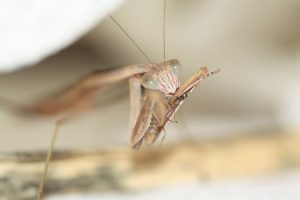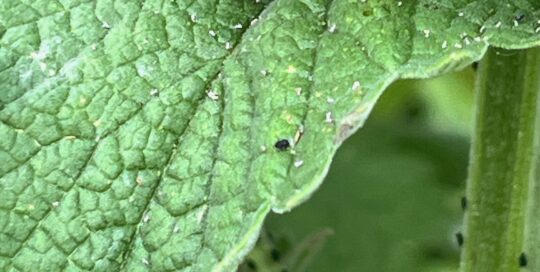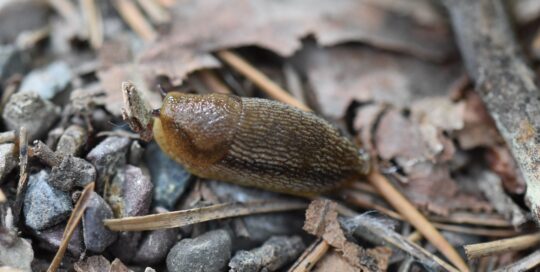What beneficial insects are worth the money
Views: 4756

A few weeks ago I had the pleasure of attending the dinner for the Montana Master Gardeners’ state convention. One of the speakers was a phenomenal entomologist from Colorado who, besides giving us the gruesome details of parasitic insects laying their eggs in their unsuspecting victims, gave us the run down on what beneficials are worth to buy for your garden.
Good vs Bad
He pointed out that the most popular choice when gardeners are at the mercy of aphids or other pests are ladybird beetles (what we usually call ladybugs). Unfortunately, it’s also the least effective choice since the ladybird beetles never seem to stick around. No matter whether you release them in an enclosed greenhouse, or if you turn them loose in the garden, even if you have a massive number of aphids, they fly away. Plus, and this is something I didn’t know, the majority of the ladybird beetles we purchase for garden use are wild harvested. There are places in California and other warmer parts of the country where they congregate during the winter, and are easily harvested to be shipped to gardeners looking to do the best they can when it comes to pest control.
Lacewings
A better option would be to bring in lacewings. Also called aphid lions, lacewings eat 20 times more aphids than ladybird beetles when they are in their larval stage. Once the eggs hatch, the larvae are on the move. They have tusk-like mandibles that tear through aphids, and other pests such as caterpillars, whiteflies, and mealybugs, in short order. When the eggs arrive space them at roughly 10 eggs per plant. Once they hatch they will spend between 1-3 weeks cleaning up the pests that are giving you problems.
Praying Mantis
Although they aren’t indigenous around here, one of the most interesting of the beneficial insects is the praying mantis. The boys raised a couple, even bringing home blue ribbons for them at the Montana State Fair, and it was amazing at how much they ate. When the flies were terrible in August, they went with me to the barn each morning to catch them while they were chilled and sluggish, then brought them home to the mantids.
We also had issues with fruit flies in the house at one point, and the ghost mantis, which was only about an inch long at that time would eat a dozen of them. Just from what we saw in a very controlled situation in the house, it’s obvious they would have a field day in the garden. Mantids eat practically anything. A friend who gave us one of them said if the prey’s head is smaller than the mantids, it will most likely lose. They are voracious eaters and efficient hunters making them a good choice if you’re going to buy something for the garden.
You can order live mantids from many places, and oftentimes local nurseries will carry them. Or, if you’re feeling very ambitious, you can order an egg sac, also called an ootheca. It will take 6-8 weeks for them to hatch, but once they do, you’ll have up to a couple of hundred baby mantids on your hands.
Decision Time!
Choose wisely when you are recruiting beneficial insects. While they can be extraordinarily helpful in reducing the pest numbers, there’s no point in wasting money when they won’t do the job.
Meet Amy Grisak
Amy is a freelance author and photographer in Great Falls, MT who specializes in gardening, foods, and sustainable agriculture. She provides information on every kind…
Amy's Recent Posts

The Complex Relationship of Aphids, Ants, and Ladybugs








